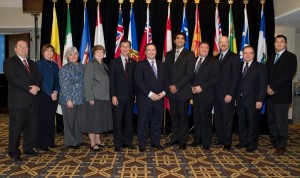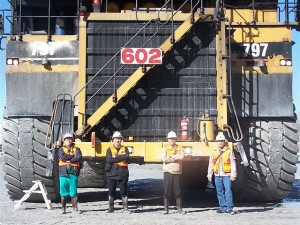
Welders will be one of the occupations that will be accepted without a 100 application sub-cap under the new Federal Skilled Trade Program (Joe Mabel)
CICS News has learned that Citizenship and Immigration Canada (CIC) has made a final decision on which occupations will be eligible for the new Federal Skilled Trades Program (FSTP) that is scheduled to open on January 2nd.
CIC is expected to announce that the FSTP will give occupations one of two treatments; Group A occupations will be sub-capped at 100 applications per year for that particular occupation, and Group B occupations will have no sub-cap and will be accepted until the program’s total cap of 3,000 applications has been reached for the year.
Occupations within Group A will be:
- Contractors and supervisors in electrical trades and
telecommunications occupations - Contractors and supervisors in carpentry trades
- Contractors and supervisors in other construction trades,
installers, repairers and servicers - Carpenters
- Contractors and supervisors in mechanic trades
- Contractors and supervisors for heavy equipment operator
crews - Supervisors in logging and forestry
- Supervisors in mining and quarrying
- Contractors and supervisors in oil and gas drilling services
- Logging machinery operators
- Agricultural service contractors, farm supervisors and
specialized livestock workers - Supervisors, mineral and metal processing
- Supervisors in petroleum, gas and chemical processing
and utilities - Supervisors in plastic and rubber products manufacturing
- Central control and process operators, mineral and metal
processing - Power engineers and power systems operators
- Water and waste treatment plant operators
Occupations within Group B will be:
- Machinists and machining and tooling inspectors
- Sheet metal workers
- Structural metal and plate work fabricators and fitters
- Ironworkers
- Welders and related machine operators
- Electricians (except industrial and power system)
- Industrial electricians
- Power system electricians
- Electrical power line and cable workers
- Telecommunications line and cable workers
- Telecommunications installation and repair workers
- Plumbers
- Steamfitters, pipefitters and sprinkler system installers
- Gas fitters
- Construction millwrights and industrial mechanics
- Heavy-duty equipment mechanics
- Refrigeration and air conditioning mechanics
- Railway carmen/women
- Aircraft mechanics and aircraft inspectors
- Elevator constructors and mechanics
- Crane operators
- Drillers and blasters — surface, mining, quarrying and
construction - Water well drillers
- Underground production and development miners
- Oil and gas well drillers, servicers, testers and related
workers - Petroleum, gas and chemical process operators
The FSTP is intended to meet labour shortages in Canada’s resource sectors by creating a path to immigration for foreign nationals skilled in high-demand trades like welding and drilling.









